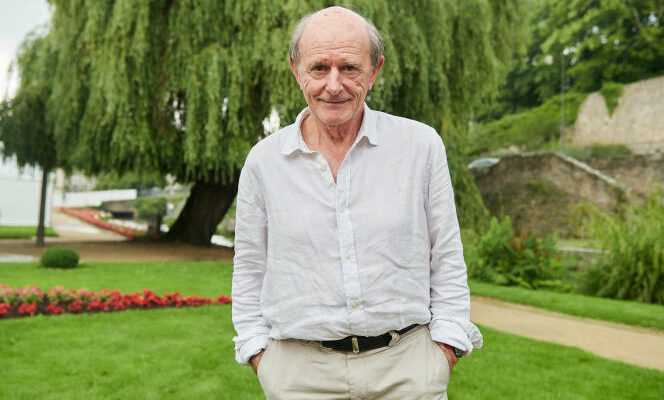“To paint a portrait of a bird, first paint a cage with an open door”, wrote Jacques Prévert. To make that of an explorer, let’s start by sketching an office, with a door or rather a window on the port of Concarneau, in Finistère. This March 28, Jean-Louis Etienne is in the premises of the shipbuilder Piriou for a design meeting of Perseverance. This 42-meter schooner, designed by the naval architects of VPLP and Olivier Petit, will be the supply ship for the Polar Pod, his next expedition. His “cathedral”, as he nicknamed this vertical ship project, which has occupied him for more than ten years. From 2024, the Polar Pod must complete two world tours over three years by drifting around Antarctica, in the service of an ambitious scientific mission.
Around the table – and, for some, in video – the discussion is hypertechnical, focusing on the veils, stairs… of Perseverance. The 75-year-old adventurer and doctor regularly takes the floor to clarify his needs, ask concrete questions and give his opinion. A few meters away, his wife, Elsa Pény-Etienne, who has been accompanying his projects for twenty-five years and involved in the interior architecture of the sailboat, is immersed in color charts, to choose the interior fittings. Between two supplies of the Polar Pod with men and equipment, every two months, Perseverance will welcome passengers who are passionate about this ocean exploration. A welcome financial resource, in addition to the partners, to amortize the costs of the ship, property of Septième Continent, Jean-Louis Etienne’s shipowners’ company (the construction of the Polar Pod is financed by the State, with the French Research Institute for the Exploitation of the Sea, Ifremer, as contracting authority).
CAP of milling turner
For those who, like him, have traveled seas, lands and even airs, depending on the era, such a site meeting might seem a bit austere. “I like these moments of technology, it gives structure and I find my place there”, he corrects himself, during a second meeting in a more personal place: his Parisian “office refuge”, on a high floor, where he works up to twelve hours a day, and often stays to sleep. There are a myriad of photos and memorabilia from his expeditions and other slices of life, a keyboard on which he plays blues as an autodidact, the guitar he made when he was 15…
You have 73.08% of this article left to read. The following is for subscribers only.
